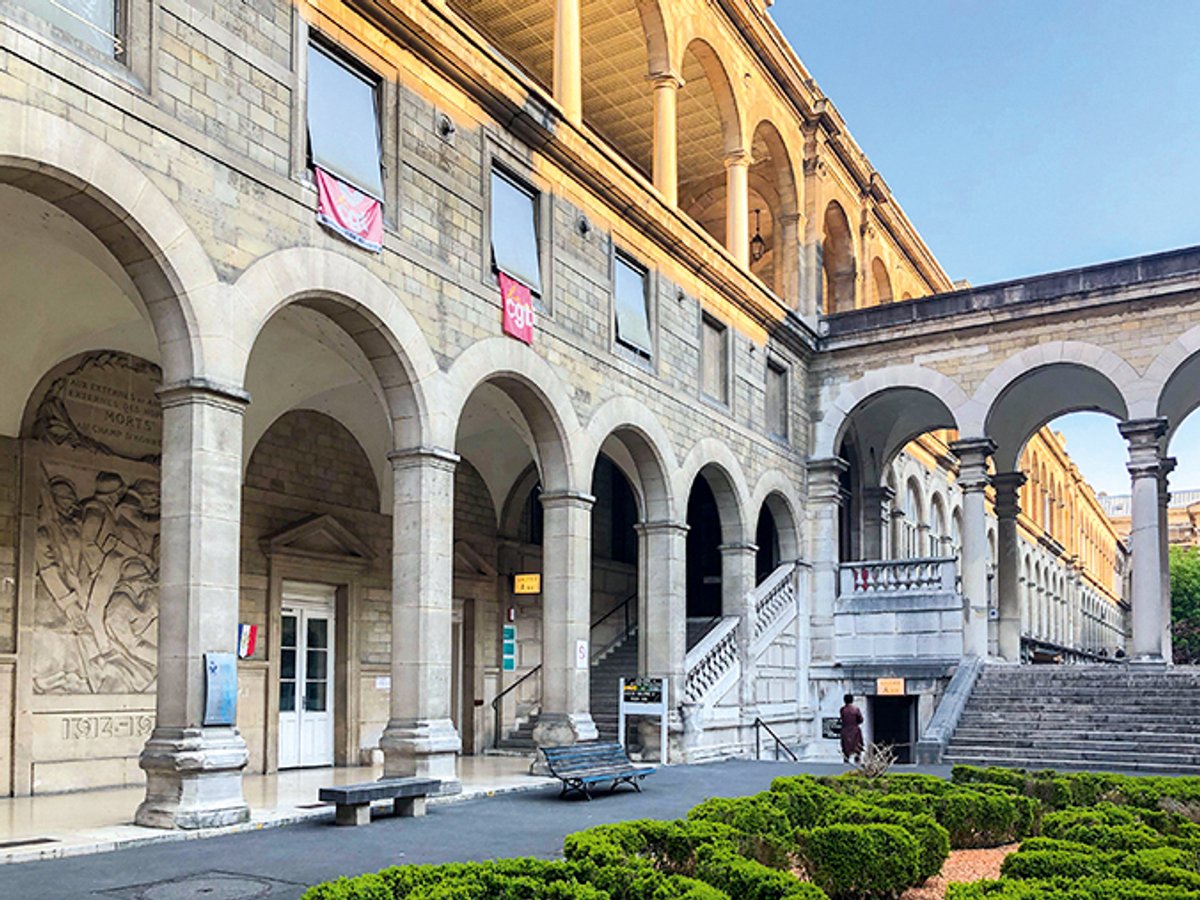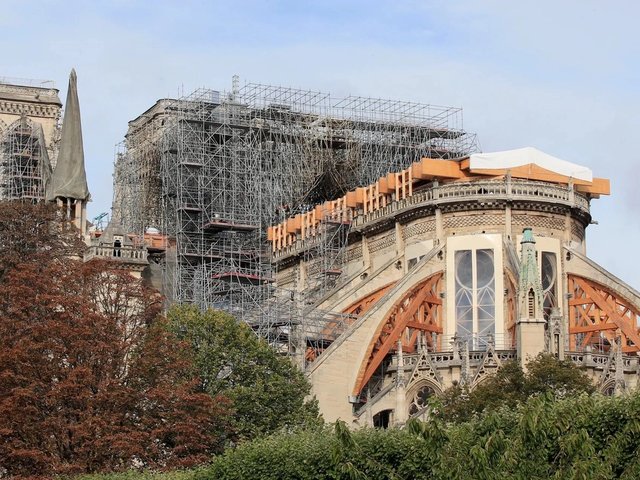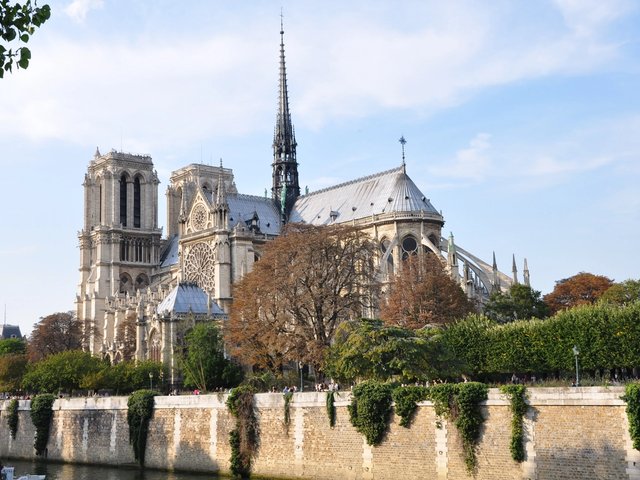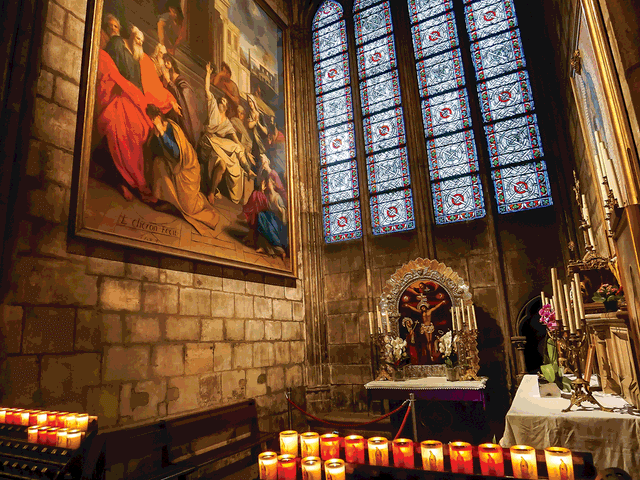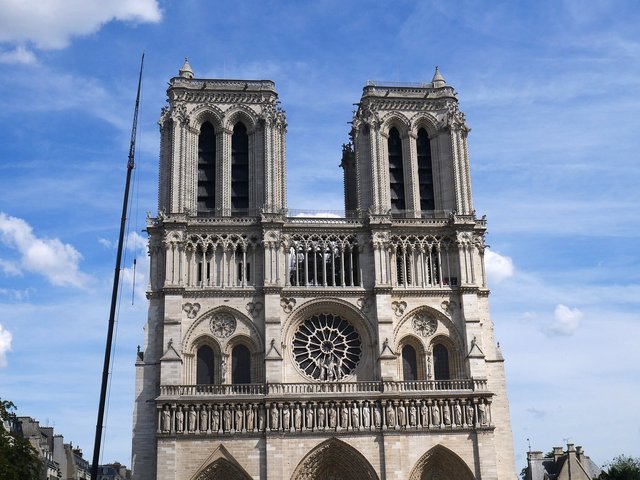Notre-Dame cathedral will have its own museum, the French president Emmanuel Macron has decided. It will be located in the Hôtel-Dieu, a hospital immediately northwest of the Paris landmark’s famous towers.
The idea of a museum, like those installed next to the cathedrals of Reims and Strasbourg, or the Duomo in Florence, was first mooted in the 1930s. It was supported by cultural heritage associations but was met with strong resistance from the various administrations overseeing the site. Macron closed down the debate and is due to unveil the plans during the cathedral’s reopening this month following its restoration after the catastrophic 2019 fire (see Notre-Dame Restoration Special Report inside).
The proposal received fresh impetus when the agency in charge of Paris’s hospitals decided to renovate the Hôtel-Dieu and establish a new health centre. One-third of the space will be leased to a developer for a shopping mall, co-working offices and restaurants.
Fearing that the museum would restrict its commercial ambitions, the agency did not welcome the idea. The former archbishop of Paris, Michel Aupetit, also objected, saying the cathedral is “not a museum, but a place of worship”. The culture ministry itself was not enthused by the idea of spending funds on a new project at a time of budget cuts and restraints.
However, at the request of Macron, Charles Personnaz, the director of the Institut National du Patrimoine for curators and restorers, drafted plans for the new institution in a report delivered in February. Its contents have not been released to the public, but the museum’s remit is believed to be the history and architecture of Notre-Dame, its role as a home of arts and crafts, and the permanent construction site from the 13th to the 21st century. It is likely to exhibit some of the 13 “Mays”, the large paintings commissioned every May by the goldsmiths’ guild to honour the Virgin Mary; the monumental choir tapestry given by King Louis Philippe; the heads of the kings of Judea from the medieval statues replaced on the façade by Eugène Viollet-le-Duc; and the stained-glass windows that have been replaced over the centuries.
Question of space
The archaeological findings made during the recent reconstruction works could also go on display. But much will depend on the space allocated to the galleries—not to mention the goodwill of museums such as the Musée du Louvre or the Musée de Cluny to release these treasures. Personnaz, a distinguished scholar, will also need to navigate the numerous administrations who have a say on the site’s development.
Although the opening of a new museum marks a significant success for the heritage associations, they also led a long battle over other areas surrounding the cathedral, which are intimately woven into its history. From the Middle Ages to the 19th century, a small square in front of Notre-Dame, separated from the main entrance by a fountain, sheltered a market where butchers co-existed with merchants of dairy products, cobblers, apothecaries, surgeons, candle sellers and book dealers. The spot attracted religious processions and festivals dedicated to the cult of ham or onions, as well as carnivals and theatre troupes. Over the years, decisions about the area were made difficult by constant feuds between the chapter, the bishop and the royal and local authorities.
During the reign of Emperor Napoleon III, Baron Haussmann, the prefect of Paris, destroyed houses and buildings in front of the cathedral’s façade to clear space. The medieval Hôtel-Dieu was torn down and replaced by a new hospital. In October, the Paris municipal council unveiled its plans to surround the square with 90 trees. The existing underground parking lot will be replaced by a visitor centre and two gardens will be linked to form a small park behind the cathedral. Work will start in 2025.


